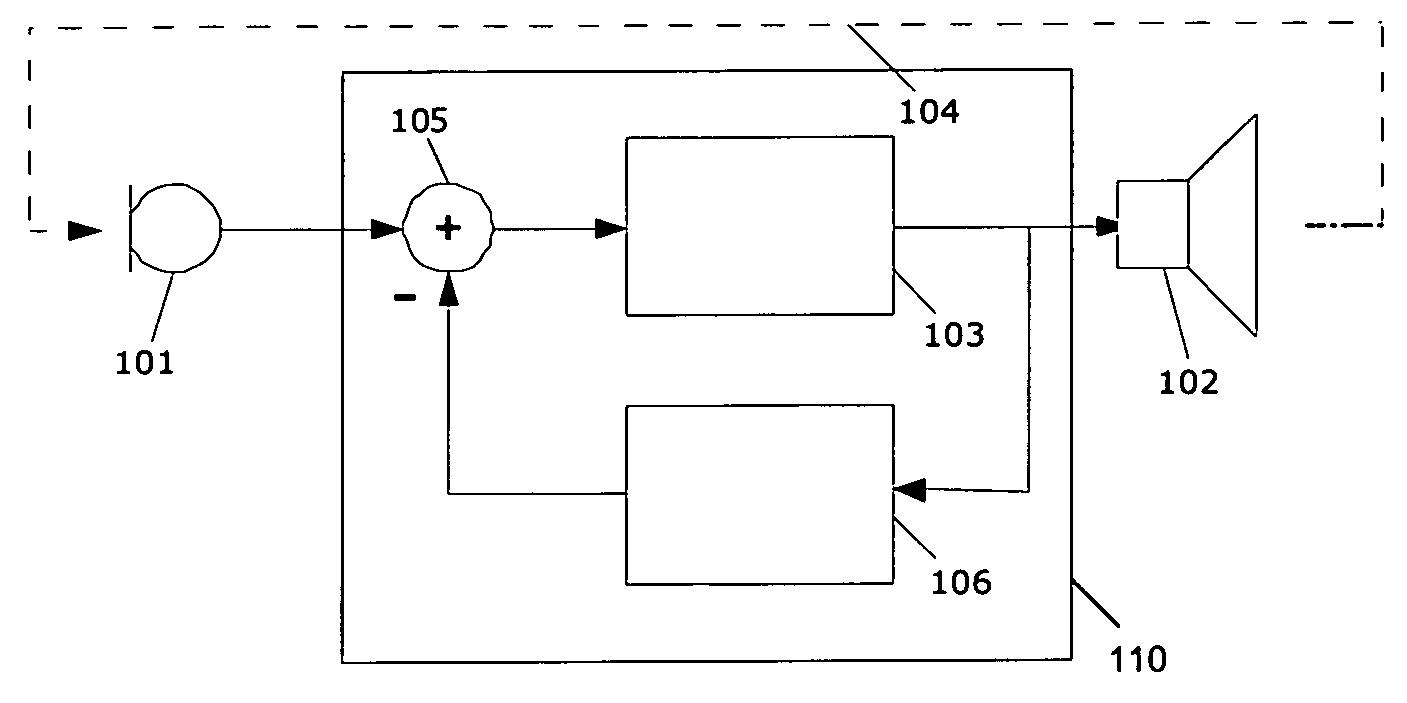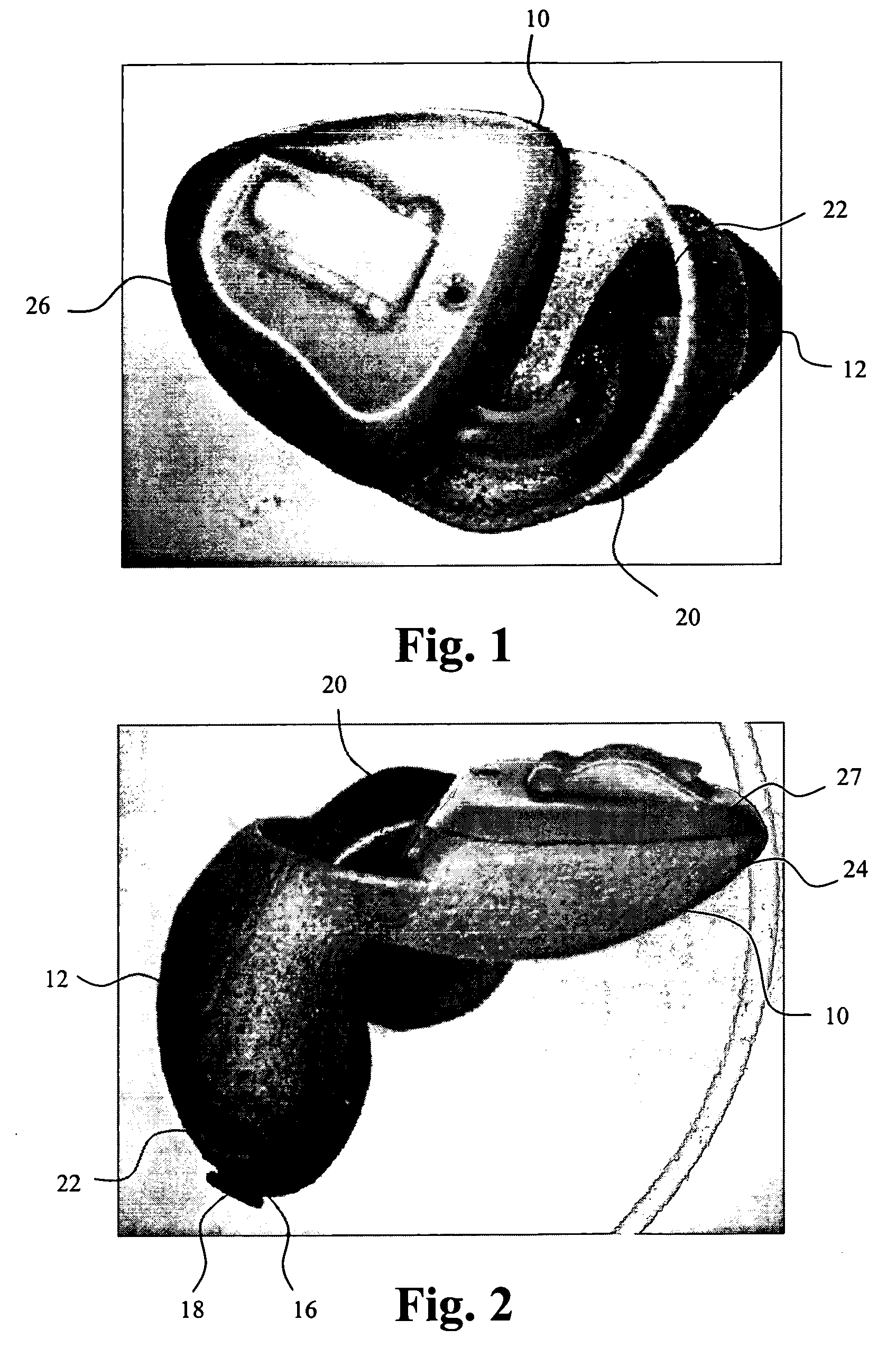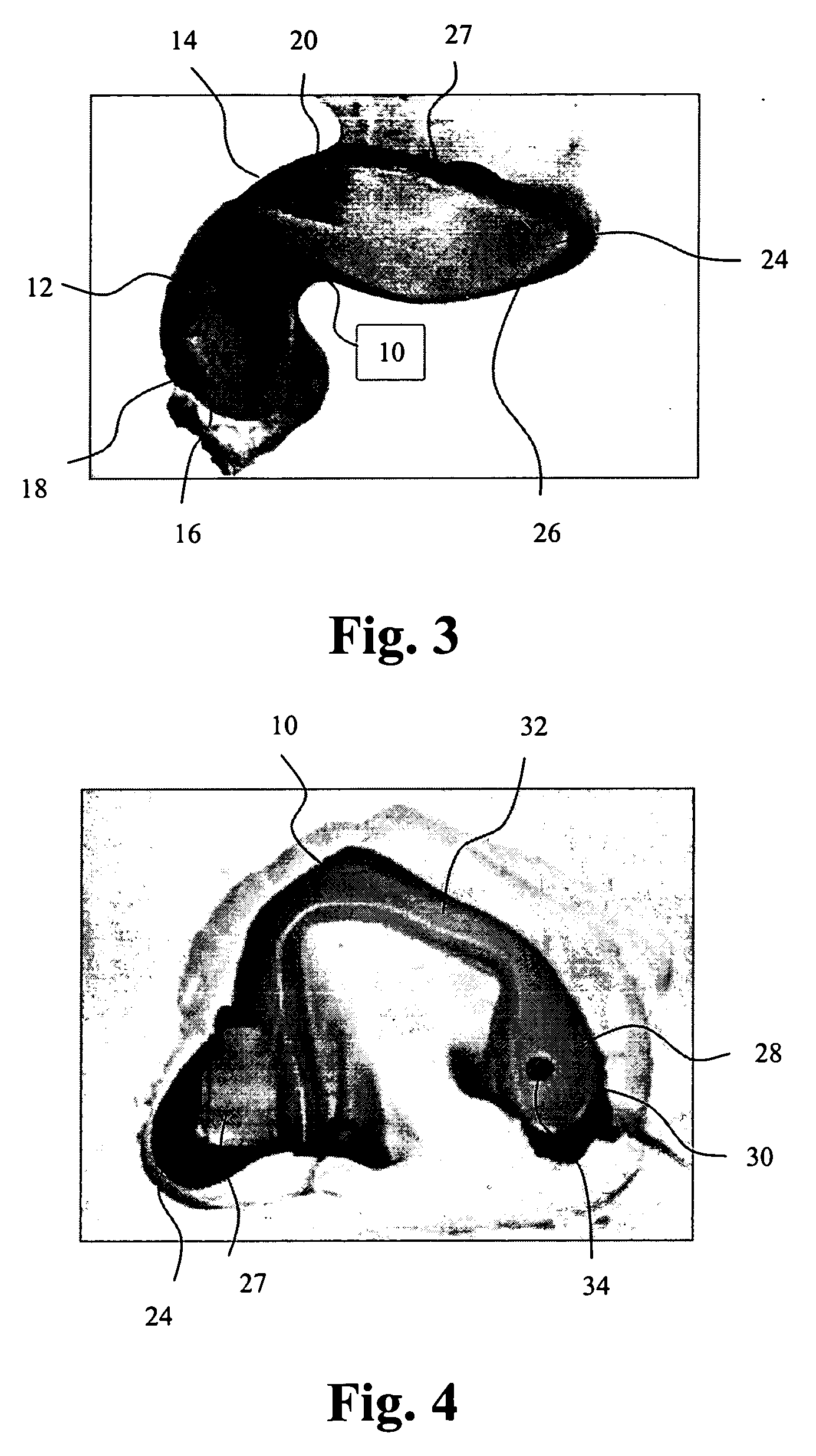Open in-the-ear (ITE) hearing aid
a hearing aid and in-the-ear technology, applied in the field of new hearing aid housings, can solve the problems of custom-made earpieces, add to the cost of the device, and the time needed to fit the hearing aid, and achieve the effect of minimising the occlusion effect, maximizing the cross-section of the vent, and low occlusion level
- Summary
- Abstract
- Description
- Claims
- Application Information
AI Technical Summary
Benefits of technology
Problems solved by technology
Method used
Image
Examples
Embodiment Construction
[0039]FIGS. 1-3 are photographs of a hearing aid according to a first embodiment of the present invention, having a housing 10 with an open canal section 12 that is adapted to be positioned in the ear canal 14 of a user comfortably fitting the ear canal 14 for retention of the housing 10 in the ear of the user. The canal section 12 has an output port 16 for emission of sound towards the eardrum of the user. In the illustrated embodiment, the output port 16 is equipped with a cerumen guard 18 hindering cerumen from entering the sound tube 20 of the hearing aid. The canal section 12 further has a vent 22 substantially eliminating the occlusion effect when the hearing aid housing is inserted into the ear canal of the user. The housing 10 further comprises a pinna section 24 that is attached to the canal section 12 for accommodation of hearing aid components and adapted for positioning at the concha 26 of the ear during use. The pinna section 24 is closed by a faceplate 27. The sound tu...
PUM
 Login to View More
Login to View More Abstract
Description
Claims
Application Information
 Login to View More
Login to View More - R&D
- Intellectual Property
- Life Sciences
- Materials
- Tech Scout
- Unparalleled Data Quality
- Higher Quality Content
- 60% Fewer Hallucinations
Browse by: Latest US Patents, China's latest patents, Technical Efficacy Thesaurus, Application Domain, Technology Topic, Popular Technical Reports.
© 2025 PatSnap. All rights reserved.Legal|Privacy policy|Modern Slavery Act Transparency Statement|Sitemap|About US| Contact US: help@patsnap.com



